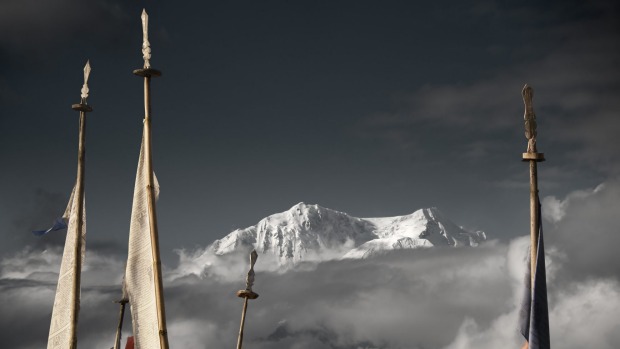
A tour operator has used simple but comfortable village houses to open the Himalayas to more than just hard-core trekkers.
Apart from the three mischievous balls of fur that are tugging at the laces of my hiking boots, there are a couple of other things that are unusual about my breakfast this morning. One is the prayer flags crackling in the morning breeze around the terrace where I'm sitting, the other is the distant shining pyramid of Kanchenjunga, the world's third highest peak, tinted pink in the early light and hovering disembodied above a doona of fluffy cloud that hides the valleys.
After breakfast, Rino Narah, my guide, leads me up beside the house where I'm staying to a green sward where 108 white prayer flags, the requisite number for a reincarnation, are shuddering in the wind. Rino points out the town of Geyzing, at eye level at about 2000 metres, pinned to the walls of the deep valley between us. Geyzing is close to the end of the road in this part of north-western Sikkim. Ten kilometres to the west is Nepal, as the crow flies it's 60 kilometres north to Tibet.
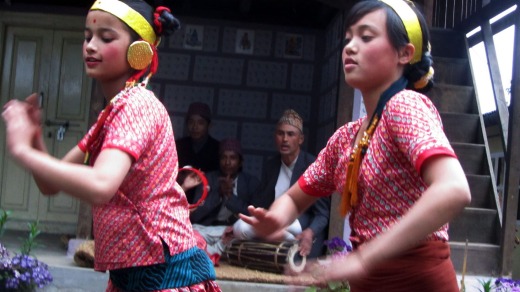
For the next three days I'll be on the hoof, walking across these rippling hills through forests of oaks, cedars and rhododendrons on a wandering northward journey. I'm travelling with Shakti Himalaya, a New Delhi-based tour operator who brings a soft cushion to the business of adventure travel in India's Himalayas. Adapting a model that it has perfected in the Ladakh and Kumaon regions, Shakti has taken three village houses in north-western Sikkim, tarted them up with comfy beds and proper bathrooms with hot showers, flush toilets, a cook and a couple of other smiling young men who perform invisible but necessary tasks, such as inserting two hot water bottles between my sheets at night. Clients walk between the village houses, giving them a glimpse of life in a remote and spectacularly beautiful part of the Himalayas, with a fair degree of creature comforts. This terrain is normally the exclusive province of hardcore trekkers capable of surviving on endless meals of dal bhat, but Shakti opens the door to anyone looking for a walk on the wild side.
Getting here has not been easy. From the airport in Bagdogra, north of Kolkata, where Rino picked me up, we drove more than five hours on a road that never ran straight for more than 30 metres. Roads in this part of the world are largely built by India's Border Roads Organisation – BRO for short. Their road signs "BRO CONNECTS, CREATES AND CARES" and "YOU ARE HERE DUE TO BRO" – lend the essential element of whimsy that is never far away on any Indian journey.
Rino suggests a visit to the local Buddhist monastery, which lies in a clearing just a short walk away. As it does in most of the Himalayan foothills, Buddhism rules the hearts and minds of Sikkim. Most Sikkimese follow the Karma Kagyu sect of Tibetan Buddhism, the so-called Black Hat sect. The head of the order is the Karmapa and for more than a decade the Karma Kagyu has been enmeshed in controversy since two Karmapas have been appointed, one of whom has been denounced by the Dalai Lama.
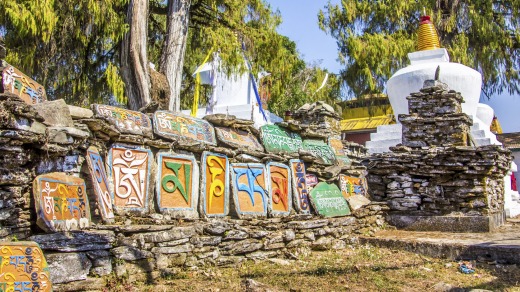
When we arrive, the monastery is in a state of disquiet for another reason. In the night, loosened by the rain, a big white cedar tree came crashing down on the back of the monastery. It's a mess, branches everywhere, roof torn, bits of room entangled and exposed. Rino tells me the locals have been muttering about chickens coming home to roost. They say the monks had been squeezing money from the village and living it up and this might be a cosmic warning. I set off to investigate the damage at the rear and Rino looks horrified. Although he says nothing, I realise this would mean walking anti-clockwise around the Buddhist building. It's exceedingly bad karma and I quickly retrace my steps.
We're loitering around the entrance when the monks arrive for morning prayers and Rino asks if I'd like to join them. We sit at the back of the dark prayer hall while the monks file in. As each enters he makes three full-length prostrations just inside the entrance before walking forward and bowing to touch his forehead to an altar covered with books, prayer scarves and flickering oil lamps. Finally each sits, arranges his ochre robes to cover his bare feet and picks up the prayers of the Buddhist canon in a deep-throated chant, which is punctuated by braying trumpets and thumping drums. The monks are young, between about five and 25. Sending a child off to a monastery is often an attractive option for families with too many mouths and too little to put in them. The monk gets fed, clothed and educated, while the family earns merit.
After about 40 minutes they file outside and circle the monastery three times. As we're leaving we fall into conversation with the head lama. He's worried that the monks' English language skills are not up to scratch. He's on the lookout for someone who can help out, with a skill transfer that works both ways. Nothing luxurious but room, board and Buddhism, all free.
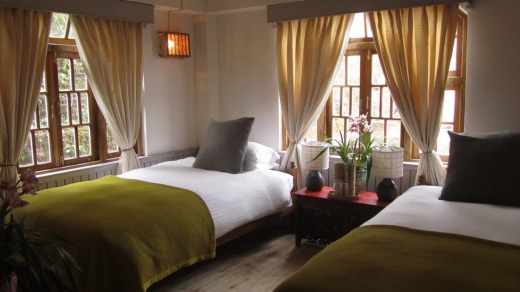
The walk begins in earnest next morning, with a long slog up a staircase that rises through forest to an old hilltop monastery with the prayer flags draped around its façade shredded and bleached. The trail takes us through small villages and an occasional town, up steep hills and across fields, but mostly through forest. We pass waterfalls and walk through a red panda sanctuary, but not even Rino has ever seen one of these shy, nocturnal in the wild.
When it enters a village the trail runs from one house to another and we march past front doors that offer vignettes of mothers sluicing reluctant children and others bent over treadle sewing machines, scattering chickens as we go. It's an odd mix of past and present, Mahabharata and modern day. On one hand there are roads, satellite dishes and the mobile phones that every farmer seems to carry, yet all the work is done by hand, and on human backs. The chopping and sawing of wood, ploughing, tending of goats and cows, planting, harvesting – all done as they would have been in centuries past. You could transplant a farmer here from 1000 years ago and he would fit right in, although the gold-coloured wellingtons that are the modern Sikkimese farmers' favourite footwear might be a surprise.
Orchids grow everywhere and not just in the damp, mossy forest. Many houses have a collection that would warm the heart of any orchid lover. At one of the houses where I stay I eat my breakfast in an elevated pavilion surrounded by orchids with gaudy open throats in pink, white, purple and lilac, all madly voluptuous, and so perfect they look plastic.
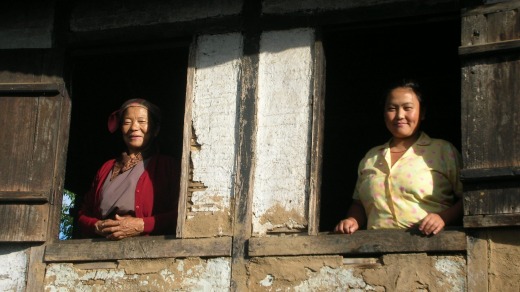
We are shepherded by dogs. At houses and villages along the way a shaggy hound will often follow us until finally it enters the territory of another and there's an almighty howling and raising of shoulder fur until the interloper backs off, leaving another to take up the pursuit.
The hills we march through are changing fast. Sikkim's original Lepcha people, who call themselves Rongtub, which translates as "the dearest people of Mother Earth", were never numerous, and their eco-conscious lifestyle had only a minor impact on their forest homeland. Nowadays the Lepcha are being swamped by new arrivals from India and Nepal, many of them attracted by cheap land on which to grow cardamom, which grows prolifically here, and yields high returns. According to Rino there are new houses and roads where there were only forest tracks a couple of years ago, and he has to constantly find new routes to keep us in forest.
Rino brings a worldly depth of knowledge to our walking days and conversation to meals that would otherwise be solitary and silent. Jamshyd Sethna, founder and CEO of Shakti, employs only young men from India's Himalayan region as guides and Rino is a shining example. Tall and slim with Tibetan features, he comes from Arunachal Pradesh, India's mountainous region to the north of Myanmar, one of the wettest places on the planet, populated by a tribal and largely animist society. He speaks accent-less English with the leisured intonation of a film star of a bygone era, learned from watching old movies as a child. He's worked as a sports journalist in Delhi, studied graphic design in New Zealand and as well as the six languages that he speaks fluently, he can understand Nepalese and get by in Spanish. He also reads Krishnamurti and Lao Tzu, and watches Breaking Bad.
On my final morning in the hills we need to leave in total darkness and walk for 30 minutes to meet the jeep that will take us to the airport at Bagdogra. It's barely 5am when Prabat, Rino's wingman, wakes me with masala chai and biscuits, always four, which is two too many, but I pocket the extras. When we begin our walk, once again with a canine companion, and Rino turns to see me throwing him half a biscuit. "I was wondering why you're so popular," he says, and we resume our trek beneath Kanchenjunga, "the five treasures of snow", glowing in early sunlight that has yet to reach into the valleys.
The writer travelled as a guest of Shakti Himalaya and Singapore Airlines.
See shaktihimalaya.com
Singapore Airlines' partner airline Silk Air flies to Kolkata from Singapore, with convenient connections to Melbourne and Sydney aboard Singapore Airlines.
The Sikkim Village Walk combines well with a visit to Darjeeling, a favourite British hill station, still rich with the colonial-era fetishes of afternoon tea and promenades on Chowrasta Mall. The surrounding hillsides produce some of the world's finest teas, and a stay on a tea plantation is ideal, easily arranged through Shakti Himalaya.
Chomolhari Trek
Also known as the Snowman Trek, this 10-day walk takes you from the deep valleys of western Bhutan to Jangothang Base Camp, at the foot of 7314m Mount Chomolhari. Unlike Nepal, most of Bhutan's forests are intact and its villagers are so removed from the 21st century they might as well be on the moon. The trip only happens in April and October, when the river valleys turn sepia with the gold of ripening rice, and yak herders bring their charges down from high summer pastures.
Tsum Valley
A traditional trade route between Nepal and Tibet, the Tsum Valley north of Pokhara only opened for trekking in 2008. The trail is a gradual transition from the Westernised villages of the Gorkha region to the staunchly Tibetan culture of the cloistered Tsum Valley. Rated moderate with a few challenging stretches, the trek threads between 6000 metre peaks, with the highest point on the trail 4085 metres, which makes it possible to walk as early as March and as late as November.
Kanchenjunga Circuit
This challenging walk takes you into a remote area set against the eastern Himalayas, with rhododendron forests, tea houses, Hindu shrines and settlements of Tibetan yak herders and constantly changing views of the world's third highest peak. The walks begin in sub-tropical conditions amid terraced rice paddies and clustered villages before climbing into forests and above the tree line. The main season is post-monsoon, between October and December.
Kumaon Village Trek
One of the prettiest and easiest walks in the foothills of India's Himalayas, this guided, four-day stroll winds between villages, over fields and forests of rhododendrons, oaks and deodars. Nights are spent in village houses with beds and plumbing suited to the Western sahib and memsahib, while preserving the simple charm bestowed by stone and ochre-coloured mud walls. It's a journey filled with warmth as well as spectacle, culminating in a final, panting climb to watch the rising sun paint the spike of Nanda Devi, 7817 metres of ice and rock, cresting into the heavens.
Manaslu Circuit
A worthy successor to Nepal's Annapurna Circuit, now largely ringed by roads, this long-distance, high altitude Himalayan circuit trek winds through remote villages and terraced fields that spill down from some of the world's highest peaks. From the valley of the Buri Gandhaki River the trek enters the Tibetan-dominated region beyond Deng, and finally into an amphitheatre of snow-covered peaks.